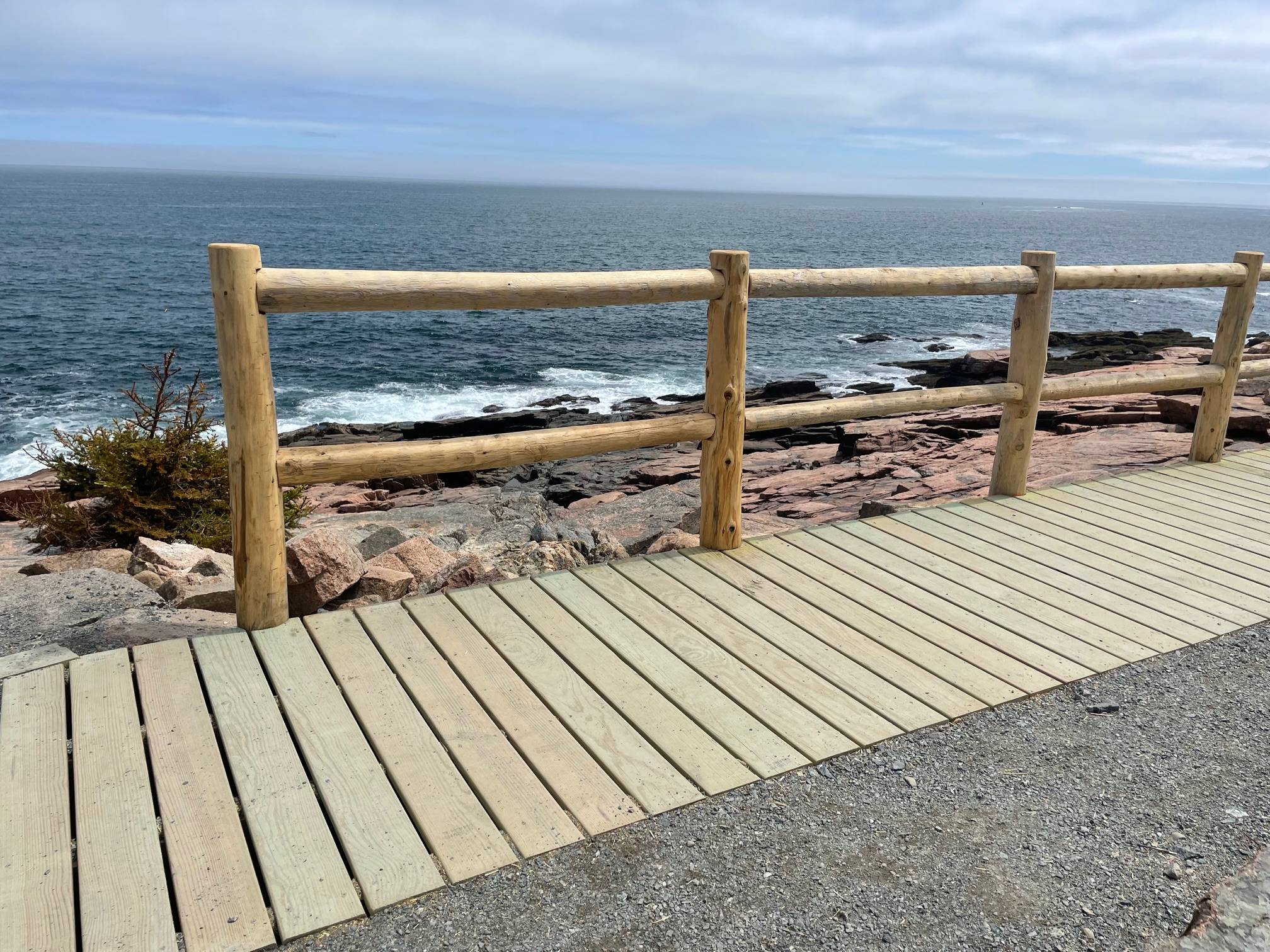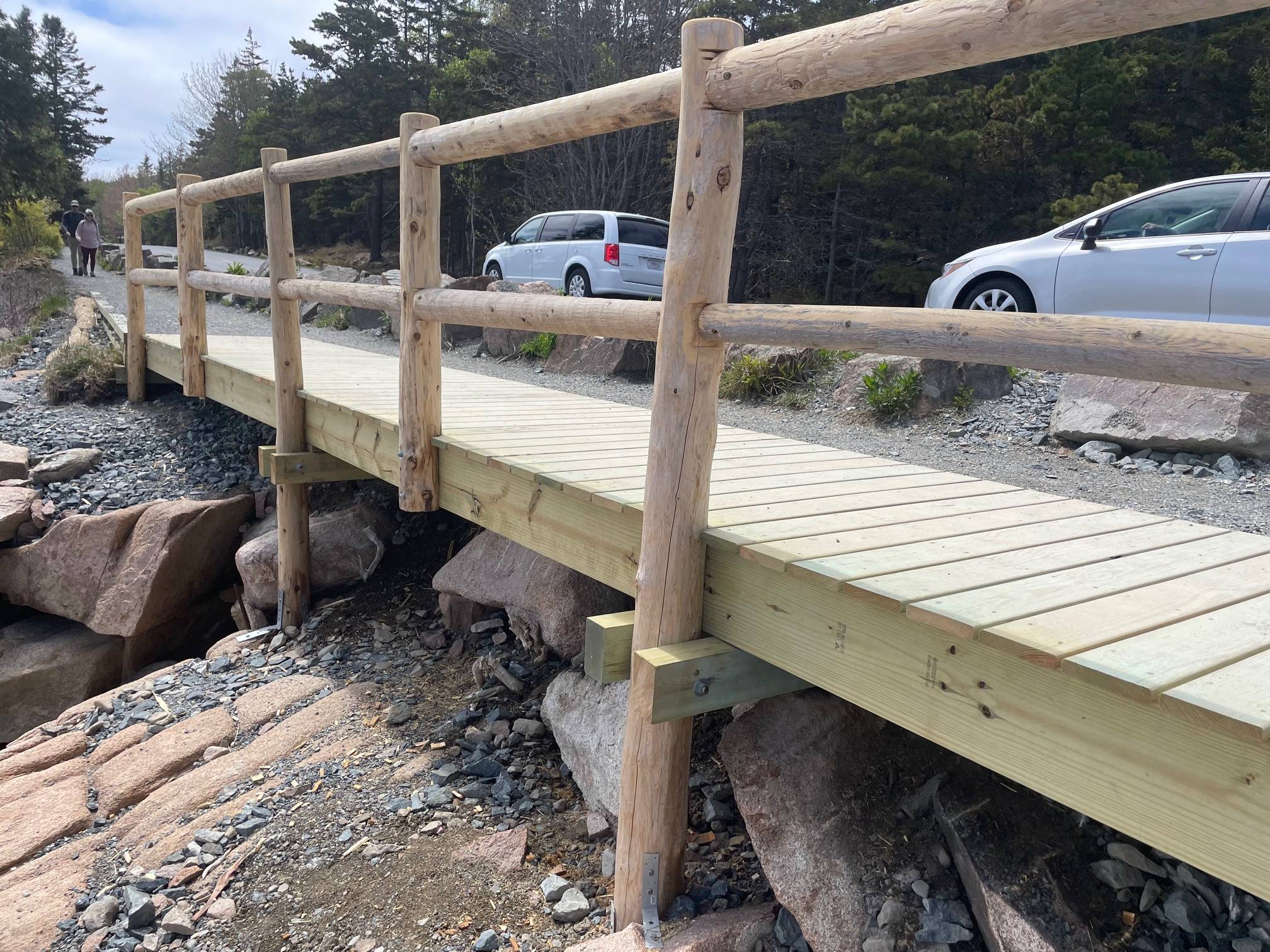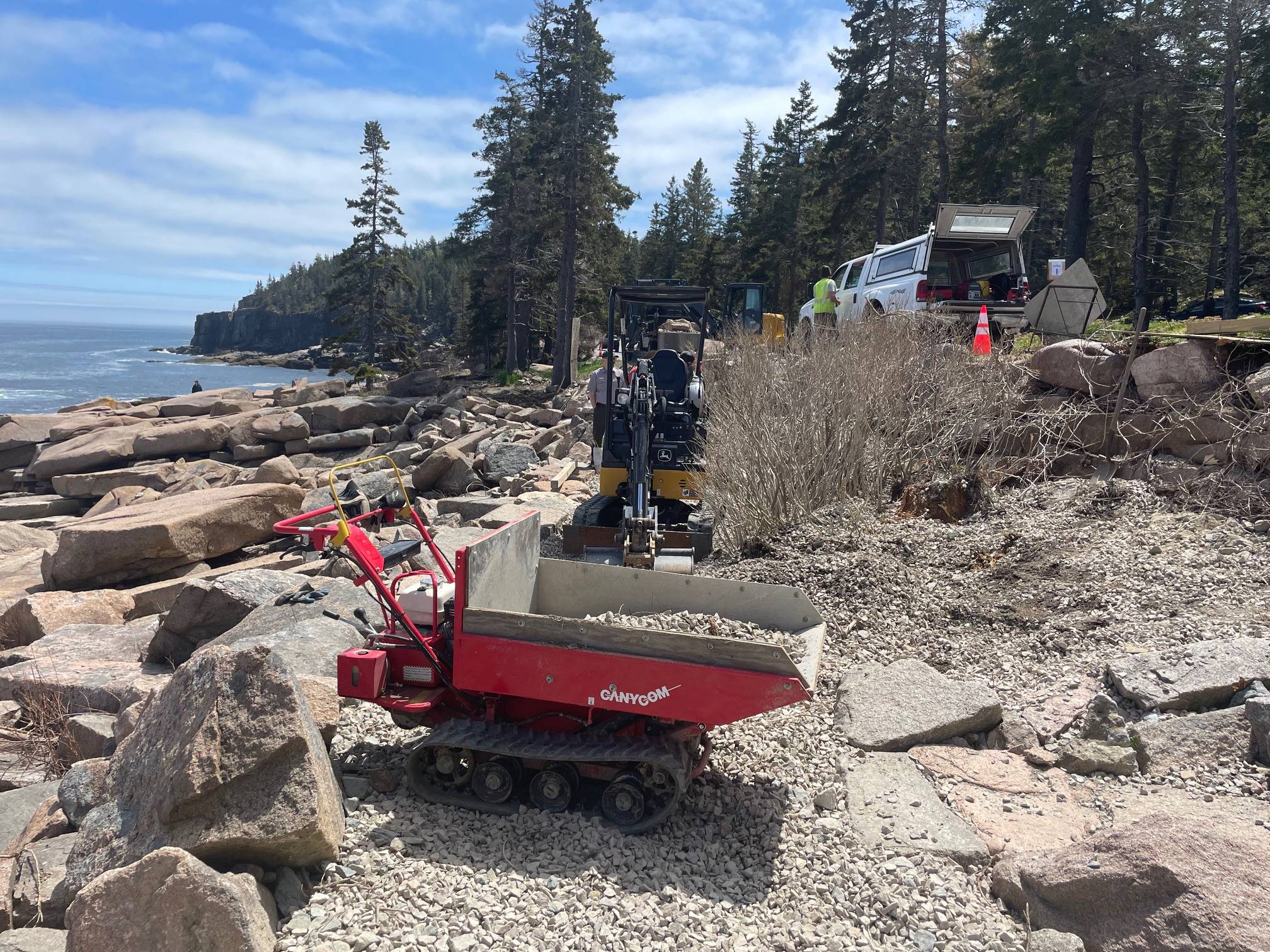Friends of Acadia Helps Get Ocean Path Ready for Peak Season
That’s what friends are for…
June 5th, 2024
That’s what friends are for…
June 5th, 2024
By now, it’s no secret that back-to-back intense storms did a real number on certain coastal areas of the park earlier this year, and visitors will likely see remnants of those storms in many areas of the park this season.
Park staff spent the first months after the storms assessing the damage and applying for federal funding to help with storm-related repairs and restoration. If federal funding is received (it is not guaranteed), it could take months or even years to arrive.
In the true spirit of friendship, Friends of Acadia stepped up to support the park in its recovery from the storm while the park awaits federal funding decisions. Park leadership suggested that Friends of Acadia could assist in the shorter-term by helping to get Ocean Path and other highly visited areas of the park ready for peak visitor season.
So, with the help of our members, donors, and volunteers, that’s exactly what we did!

Equipment purchased by Friends of Acadia in use as Acadia National Park crews work to ready Ocean Path for peak season. Photo by Eliza Worrick/Friends of Acadia
This past week, Acadia’s top notch trail crew completed temporary repairs on the 1,000’ section of Ocean Path that was damaged heavily in the storms.
According to Trail Crew Foreman Dave Schlag, it’s a temporary fix because “to accomplish the complete historic rehabilitation, it will require quite a bit more work to bring it back to its glory. Also, it’s in the trail’s best interest to monitor what is going to happen with the storm damage in the upcoming winters before we proceed with a full rehabilitation.”
As you are out on Ocean Path, you may notice two new bridges that were built in the storm damaged area to provide visitors safe passage over the damaged retaining walls. According to Schlag, it will require more extensive dry-stone masonry and much more time to fully re-construct the two damaged areas where the bridges are currently located.

A newly constructed bridge on Ocean Path. NPS Photo

Two new bridges provide visitors safe passage over the damaged retaining walls. More extensive dry-stone masonry and much more time is needed to fully re-construct the two damaged areas where the bridges are currently located. NPS Photo
Another interesting fact about the newly reconstructed section of the trail, according to Schlag, is that the trail crew has implemented a new steel plate system to attach the wall rocks to the ledges, hoping to help keep wall rocks in place and keep them from lifting up when struck by large waves. “The older iron pins that you see along the trail only helped to keep the rocks from sliding towards the ocean while supporting the trail,” he said. “We’ve also added numerous significantly larger rocks into the retaining walls in hopes of having a better chance of standing up to storm damage as well.”
The Ocean Path trail work is expected to be completed by June 14.
Not only did Friends of Acadia help fund the repair and restoration work done by Acadia’s trail crew, but we also funded the shiny new equipment—the new compact but powerful tractor, mini-excavator, and two canycoms “track barrows”—used to help with those repairs. This equipment was part of recent grants from the Yawkey Foundation.
Friends of Acadia also teamed up with the park to host three planned volunteer days in April and May to help with storm cleanup. More than 50 volunteers pitched in to haul broken trees and limbs, move rocks, and clean-up a few dump trucks worth of debris. Read more and see photos of storm clean up here.

Friends of Acadia helped fund the repair and restoration work done by Acadia’s trail crew, but we also funded the shiny new equipment used—the new compact but powerful tractor, mini-excavator, and two canycoms “track barrows”—used to help with those repairs. This equipment was part of recent grants from the Yawkey Foundation. NPS Photo
Many individual Friends of Acadia members have reached out with offers of help, too.
When Kay and Bill Koplovitz heard the storm news, they contacted Friends of Acadia with an offer to match any new gifts of support up to $100,000! The Acadia Storm Damage Giving Challenge is currently under way and all of funds raised up to the $100,000 will be matched by the Koplovitzes and will be used to help the park ready for the season, including supporting volunteer efforts and equipment needed for storm restoration work.
If you would like to help with storm restoration and have your gift matched, you can give here.
Scientists have long predicted more frequent extreme weather events as the climate changes, and now it’s a reality. This presents many challenges for the park in terms of how and whether to repair and rebuild.
“We are having challenges predicting what the future climate scenarios are going to look like for wind, waves, rain, snow,” said Acadia’s Chief of Facilities Management Keith Johnston. “Our weather forecasters are challenged with this, too. We just have to roll with it and try to make smart decisions.”
Those smart decisions are born out of a management framework Acadia uses known as Resist-Accept-Direct (RAD). This framework is designed to help resource managers consider different options in the face of a changing climate. Where does it make sense to “hold the line” and try to prevent change from happening? Where is it wise to accept those changes and let nature take its course? And where do they want to encourage things in a new direction?
“Dramatic weather events like those we have experienced this winter create great anxiety and sadness as we witness the damage and understand that we are vulnerable to nature’s fury,” said Stephanie Clement Friends of Acadia’s vice president of conservation. “Acadia’s use of the RAD approach restores a semblance of control—that we can observe the changes happening here and work together toward desired future conditions.”
Related Links:
The Storm Restoration Challenge – $100K Match
Learn more about our climate-smart restoration here: Wild Acadia Program
Read more about the back-to-back storms on January 10 and 13 that caused damage in Acadia.